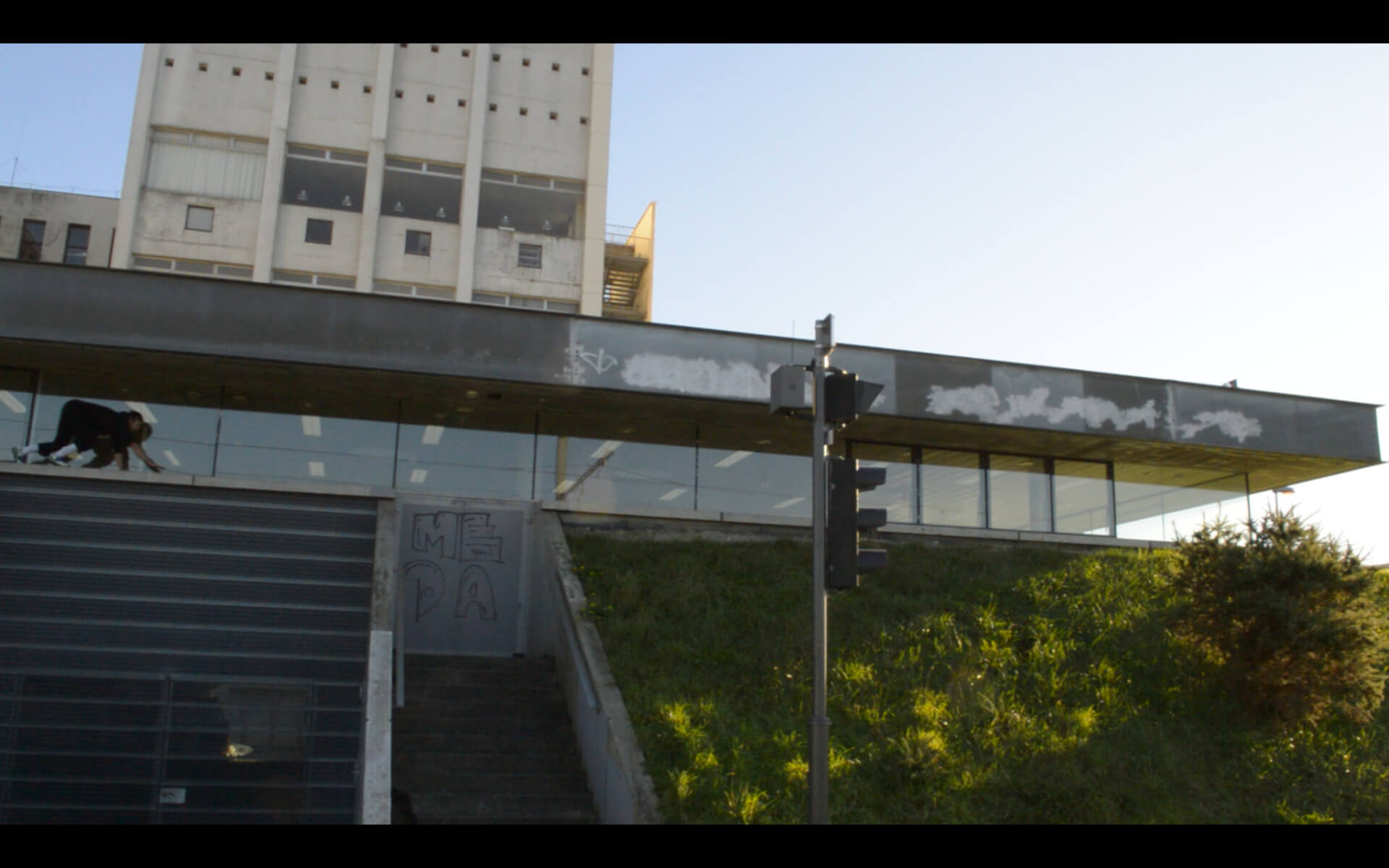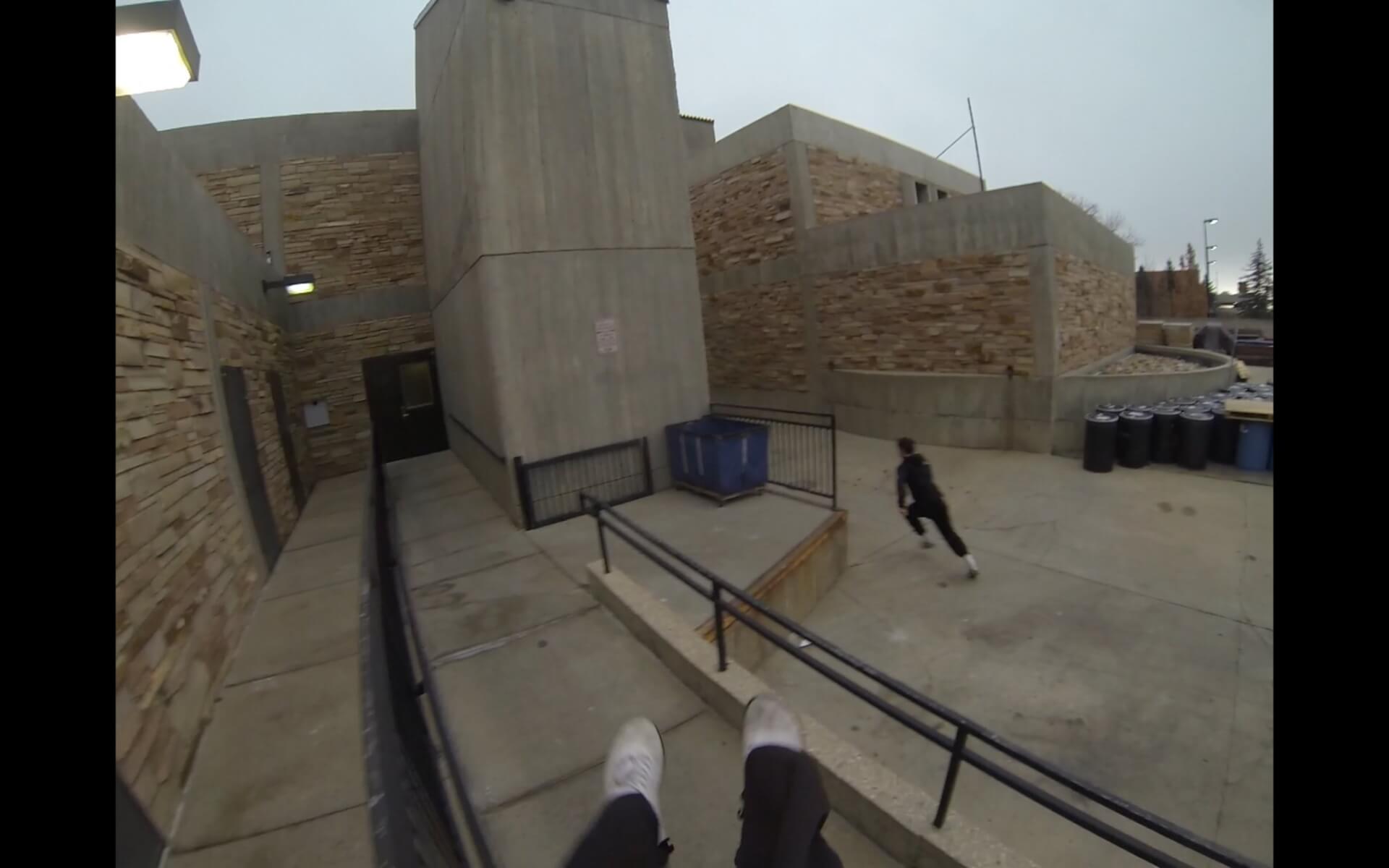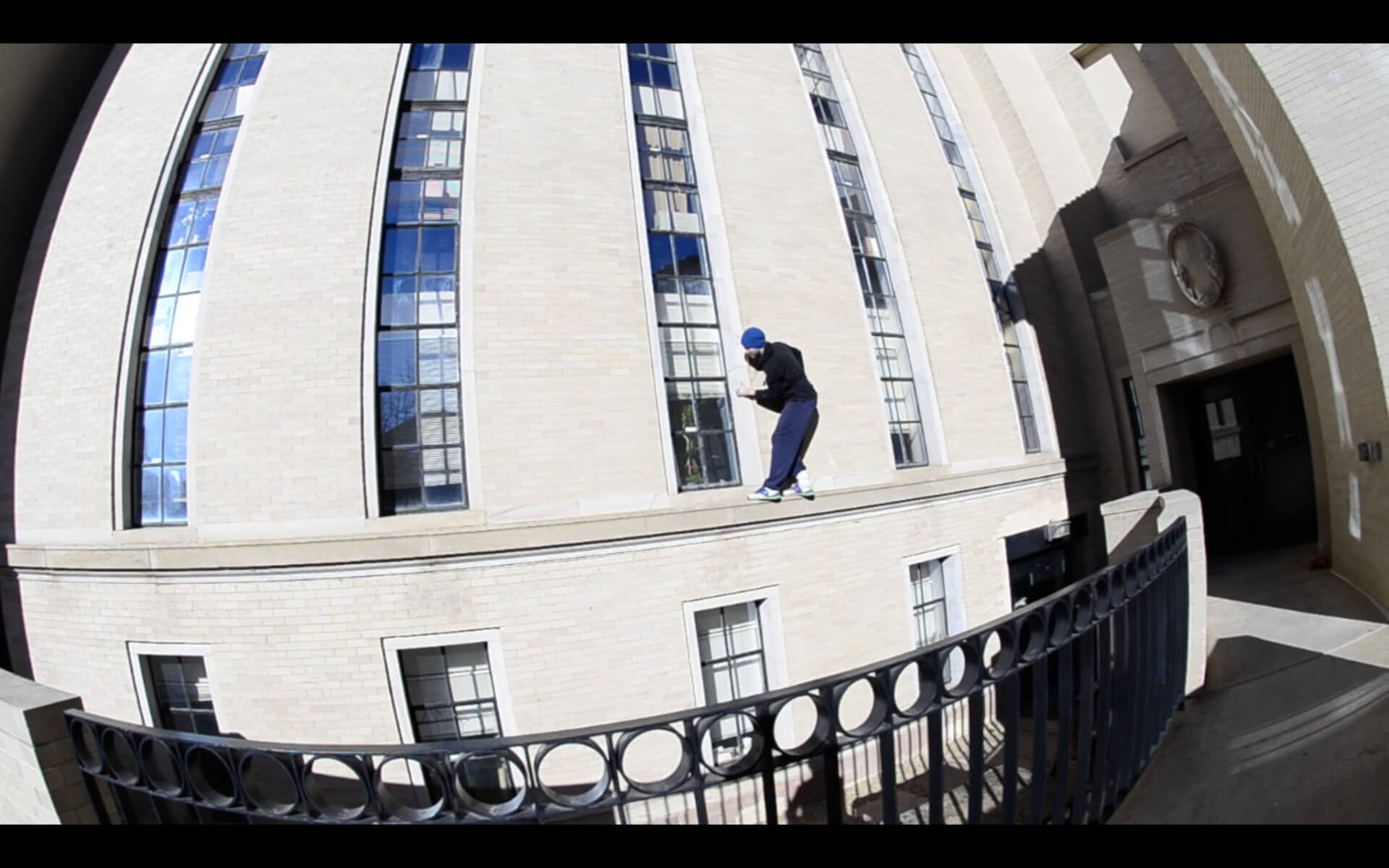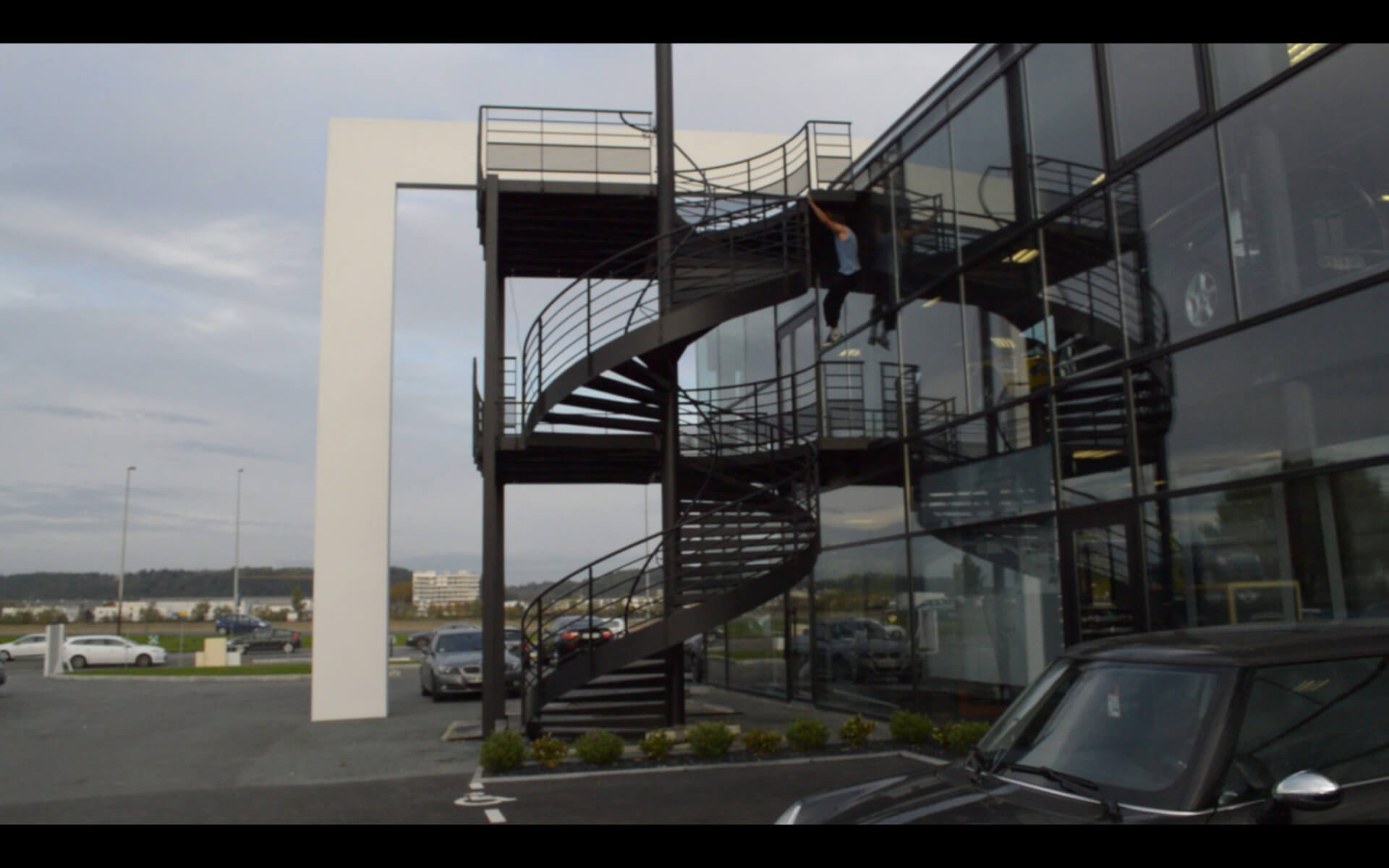So, you study Parkour. You’re tough, strong, capable, more prepared for life’s challenges. Maybe your mantra is “être fort pour être utile (be strong to be useful),” and you tell people that one of the many benefits of your discipline is the ability to save someone’s life, evade, chase, and stand ready in the face of emergency situations that unfold before you.
But wait… That massive double kong and daunting rail stride mission, while unbelievably fast, probably don’t fit in anywhere useful while saving someone from a burning building. And unless you’re on the set of the movie “Freerunner,” kong to precision to front flips off dumpsters that aren’t even blocking your lane aren’t going to help you reach your destination all that fast, which in the case of this film means your head getting blown off if you’re the last person to the checkpoint… (If you didn’t get that, don’t worry, I don’t think many people actually saw that movie. If you’re looking for a good time and lots of laughs, skip the nutella slumber party and get a bunch of Parkour friends together to watch it) (or both, same time).
If you examine how most practitioners train, do you find that they put a lot of attention on:
- staying calm in the midst of chaos,
- identifying/examining surfaces by sight,
- practicing adaptations to unplanned outcomes that not only save you injury but put you in the next best possible position to continue your objective,
- gathering information about the surroundings (clearance, structural stability, spacing, debris) while executing high-speed movements,
- stealth,
- practicing techniques for falling for the times WHEN you slip, misjudge, or a probability doesn’t go your way?

In my experience (and I’ve done a fair amount of travelling and training with communities all over the world) attention on things like these is incredibly rare to almost inexistent. This is not a completely negative thing. Most of us train and play for many other benefits and reasons than to be prepared for life’s emergencies. I also don’t believe it’s healthy to simply train for the very low probability of emergency situations that can be rare in a lifetime (unless of course your job, lifestyle, or interests notch this probability up a bit).
Another reason this is not a common focus is simply the age of the art. We’re still in some sort of nascent era, where most practitioners are still mastering isolated movements and some combos. Flow is rare, let alone placed in a live setting where breaks in your flow could cost your life or someone else’s.
If you want to truly be prepared when called upon instead of cower in a frozen inability to act, to be ready to help someone in need rather than just offer an entertaining backflip, to live an empowered life where benefits cannot be counted, it will be important to spend at least a little time studying the intersection of Parkour and time sensitive, real-life challenges.
Parkour Randori is a project that will seek to focus on this direction with our discipline, to study this intersection.

Randori (Rahn-doh’-ree), a Japanese word used in martial arts like Brazilian Jiu-Jitsu, Aikido, etc. translates as “catching chaos” or “chasing freedom.” The meaning of ‘randori’ depends on the martial system it’s being used in, but is generally used for the part of training where instead of simply practicing isolated techniques or combos, one trains reactions in the face of unplanned attacks and unexpected scenarios. Many people use the term ‘sparring’ for this phase of training, others may say ‘defending against multiple attackers,’ depending on the martial art.
Today it is so rare to see Parkour put to the test without steps first mapped out. You’ll often see a traceur ask the person behind the camera to start over or line up a massive kong to cat while knowing the exact distance measured in shoes. Many of life’s challenges won’t be urgent, and you’ll get a chance to set up, but the faster you can problem solve, react, and move for time sensitive challenges, the more prepared you’ll be across the board. Common Parkour training will naturally prepare you for something like saving a cat stuck in a tree; Parkour Randori will focus on the path to the person in a burning building as well as the exit. Parkour training in general gives you tools to help someone push their broken-down car, get somewhere most humans can’t go, or help your grandpa move something heavy; Parkour Randori will be a laboratory that observes skills for evading the physical reach of exploitation in a violent dictatorship, saving a life in the heat of a natural disaster, or maybe bringing an untouchable corporate criminal to justice.
Zombie. Apocalypse.
Anywhere the science of movement meets emergency situations and time sensitive, real-life challenges, this project will try to analyze it, and prepare an individual for it through drills, methods, techniques, and tutorials.
 It will seek to develop the important information hierarchies of which you will focus your attention on while performing high-speed movements. It will cover topics like live-training in the dark/low visibility, crossing busy streets fast, dead end adaptation (developing constant awareness of alternate exits), complex landing continuum series, hiding techniques/psychology of concealment, breathing techniques for rest phases, etc. It will explore the variations that will come about depending on several modes you will transition in and out of: stealth, emergency/chaos, object manipulation (e.g. unconscious bodies), surface analysis, hiding, etc. Parkour Randori is not limited to the woods, this project will be conducted in all environment types that humanity experiences, even touching on rare shapes and problems like ladders or kicking in doors.
It will seek to develop the important information hierarchies of which you will focus your attention on while performing high-speed movements. It will cover topics like live-training in the dark/low visibility, crossing busy streets fast, dead end adaptation (developing constant awareness of alternate exits), complex landing continuum series, hiding techniques/psychology of concealment, breathing techniques for rest phases, etc. It will explore the variations that will come about depending on several modes you will transition in and out of: stealth, emergency/chaos, object manipulation (e.g. unconscious bodies), surface analysis, hiding, etc. Parkour Randori is not limited to the woods, this project will be conducted in all environment types that humanity experiences, even touching on rare shapes and problems like ladders or kicking in doors.
Even if the most talented practitioner in the world was called to act and couldn’t keep calm and focused, her skill would hardly be of aid. Parkour Randori will study the mind in the context of these time sensitive, real-life challenges and produce drills and methods for mastering it.
Just like randori in martial arts, Parkour Randori is incredibly dangerous at full speed and should be reserved for advanced practitioners, but this project will offer a beginning path that will be safe for the novice traceur/traceuse to integrate into their training in early on stages.

Commonly so, this is not a new idea. This project will look at the positive from the past (ninjutsu and variations, la méthode naturelle, research from military/law enforcement/firefighters, etc.) and mesh with the discoveries of Parkour today and in the future, applying them to our modern lives.
This is a short article, and thus difficult to capture the vast potential this project has, so for added clarity, here are some distinctions that may help:
- If you’re practicing Parkour Randori, you’re practicing Parkour, just as if you were sparring or simulating street fights in Brazilian Jiu-Jitsu, you would be doing Brazilian Jiu-Jitsu. As it is with martial arts, using the term ‘Randori’ is not to say it is something separate, but instead allows us to communicate more precisely as our discipline evolves. If you don’t like the name of this project, feel free to call this direction with our training something else.
- Although developing an ability to move spontaneously and react without preparation through various drills is a very important piece of Randori, it is not entirely that. This project seeks to explore a much broader portrait of time sensitive, real-life challenges. For instance, how one would prepare the mind for chaos, probability judgments for structural integrity, to react well to pain and assess an injury in order to complete your objective, carrying unconscious bodies, utilizing advantages of moving in groups, urban camouflage, and lot’s of things you can’t get from just training drills that encourage spontaneous movement.
- If you believe that Randori is the end goal of Parkour, the term Randori may sound redundant, but I don’t believe any one person has the right or position to be the ultimate arbiter of what it is we’re all supposed to be doing and what the end goal of Parkour is. There are so many benefits and reasons a person studies this art, so many interpretations of the philosophy, and I don’t find it my place to declare to the thousands and thousands of practitioners worldwide that Randori is the end goal of their training and that they’re doing something wrong if it’s not. Instead, for the many people that value this direction, my hope is that we can more clearly communicate about this very interesting component of Parkour and bring more awareness to it.
- Although martial arts are such an empowering practice, and are inevitably useful in emergency situations and time sensitive, real-life challenges, the study of combat is so vast and varied on personal philosophies of how to be a protector that I feel that this project will accomplish more if narrowing in on movement and leaving self defense to martial arts (which I highly recommend by the way).
If we’re going to embrace life’s challenges instead of hide from them, we’ll need a chance to ‘spar’ and consider elements that are not present in our everyday training, not just simply practice pre-planned movements in a calm atmosphere at a steady pace.
A deeper look at Parkour Randori coming soon in more free content as articles and videos, but until I have enough free time to put into content creation, the best way to experience this approach is through workshops and seminars. Contact Amos@apexmovement.com to schedule one near you.
If you wish to be updated with the release of tutorials, techniques, fun experiments, etc. and take part in this project through dialogue and debate, subscribe to the following:
—
Written by Amos Rendao
Owner / Head Instructor / GM / Professional Athlete at APEX Movement
Cofounder | ParkourEDU
Founder | Parkour Ukemi
To stay up to date with all of my projects, ideas, articles, science, etc. subscribe to the following:
Special thanks to Audrey Bartus, Vinny Fiacco, Dr. Kenneth Kao, Brandon Douglass, Ryan Ford, and Ian Sanderson, for your perspective and aid.

3 thoughts on “Parkour Randori: Putting It to the Test in Real-Life Emergency Situations”
Hi Amos, I really love this post and the idea behind. Actually I read about your project already some time ago, I watched all the videos on youtube, but I was wondering whether you have something more “structured”: a method, a course, progressions and so on …
I expect tips about how could I introduce random disturbance in a particular environment (eg. a vault over a rail, especially outside) still keeping it safe …. Thanks. Simone
Hey Simone,
I would absolutely love to put out all my findings and methods, but we have so many more priorities for the content we want to put on parkouredu.org first.
In the meantime, your best resource would be having me out for a workshop or two near you. Whether it’s that you can host or find a location near you to host if there’s enough interest in the area to make it viable.
Email me at amosrendao@gmail.com if you’re interested in taking next steps 🙂
Hey, Amos.
Great article, man. Thankfully, my parkour instructor holds these same values. I think it ultimately makes for a deeper art. Truly utilitarian.
I look forward to reading more of your thoughts on this.
-Matt.